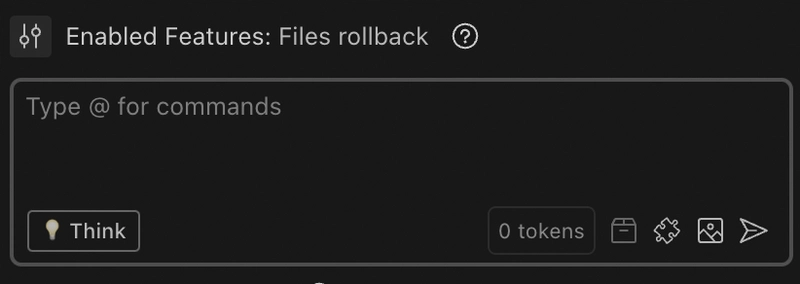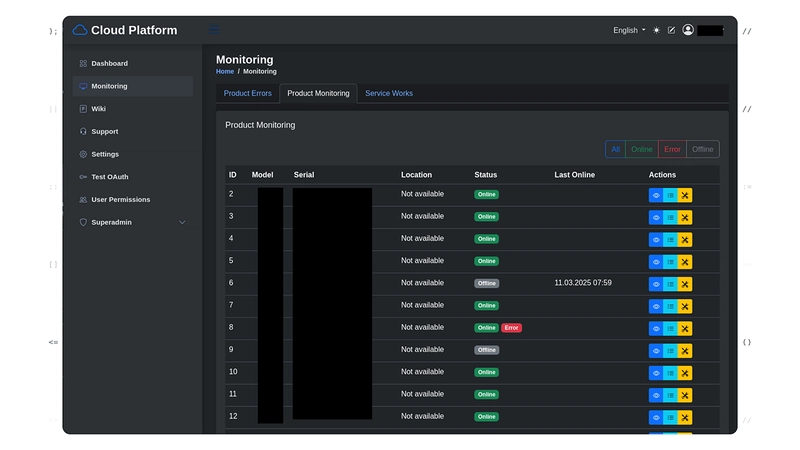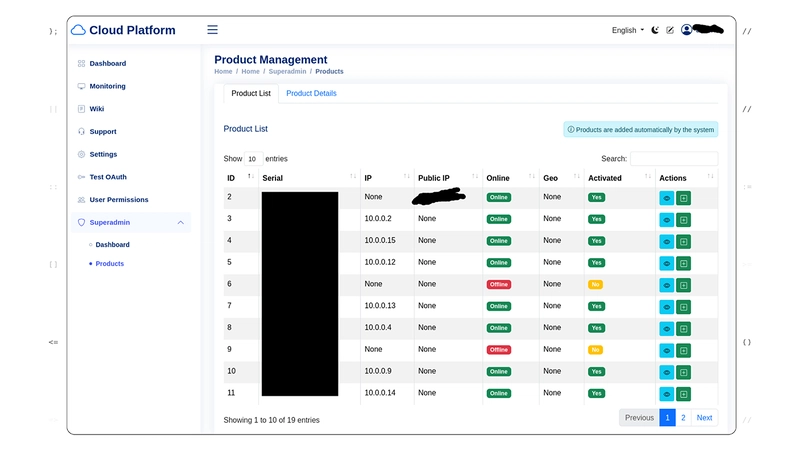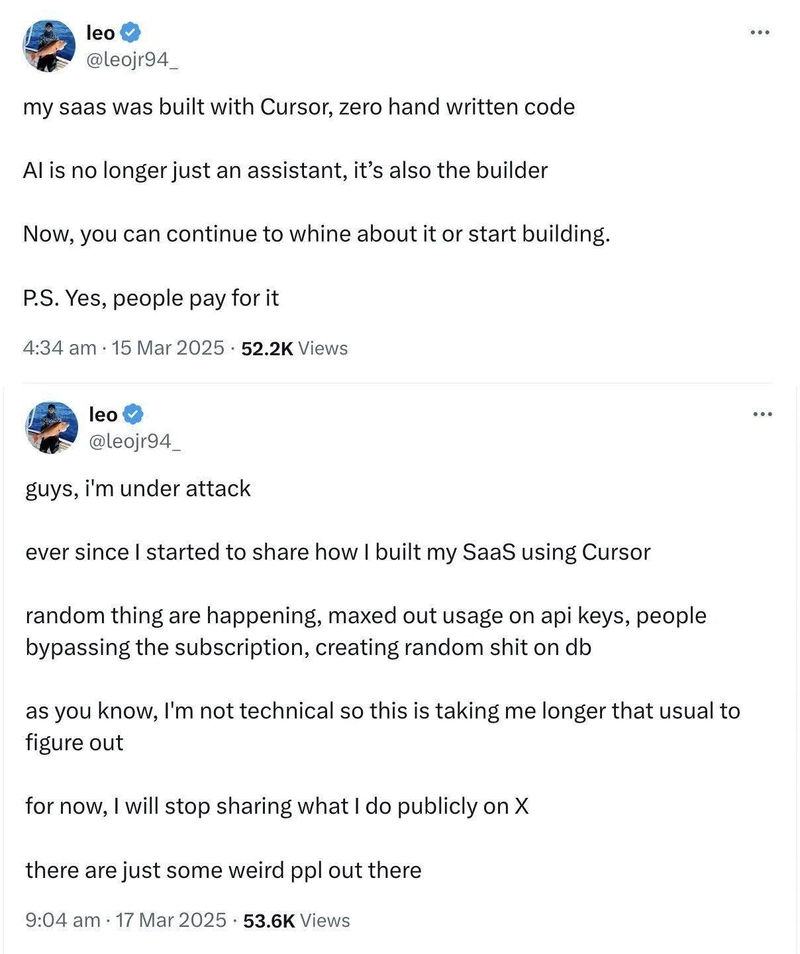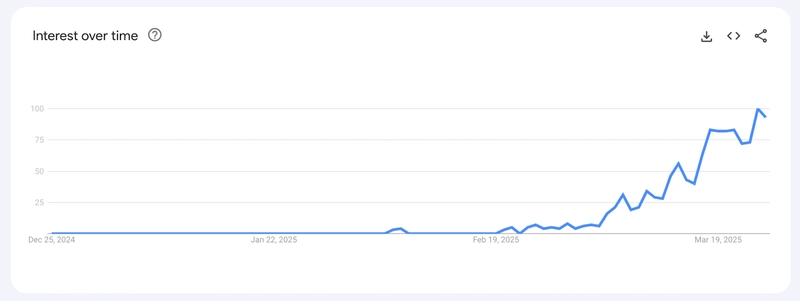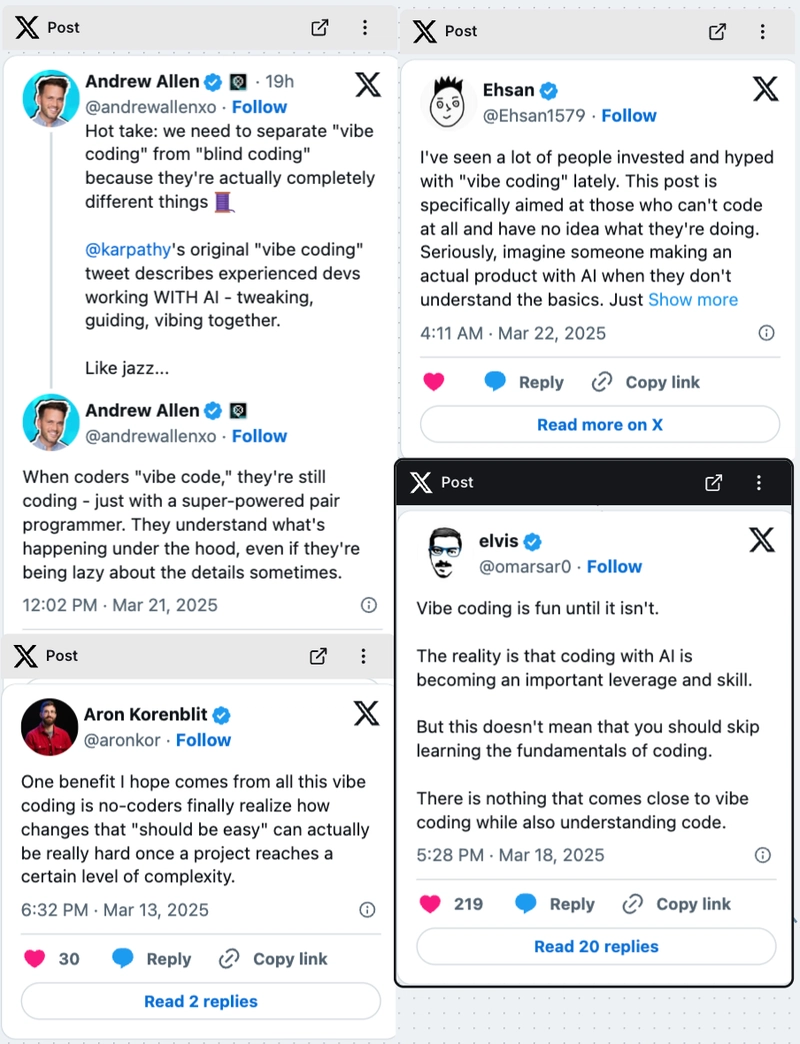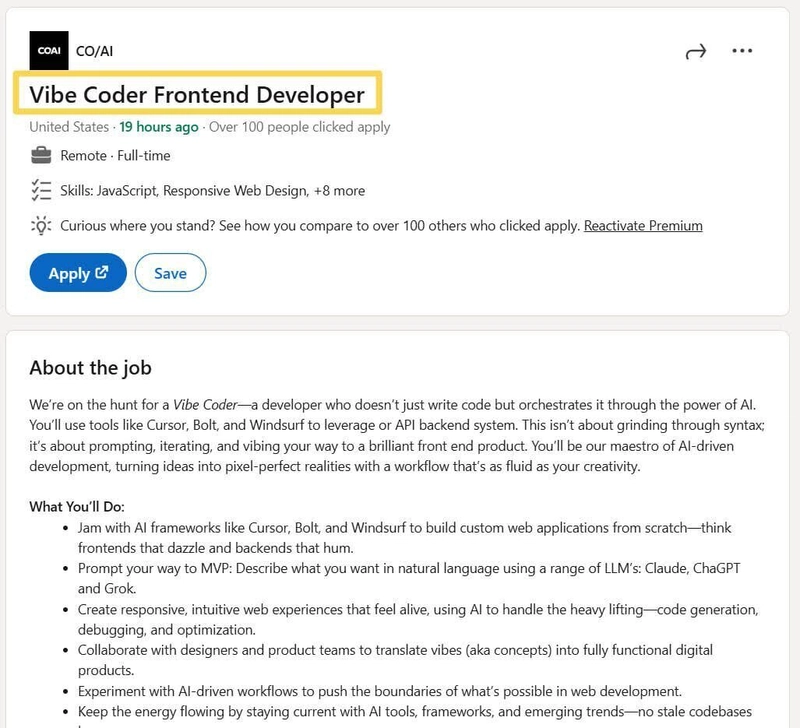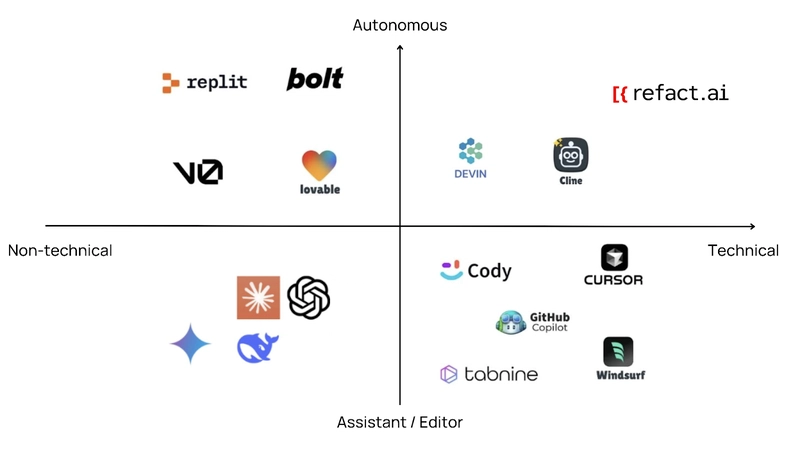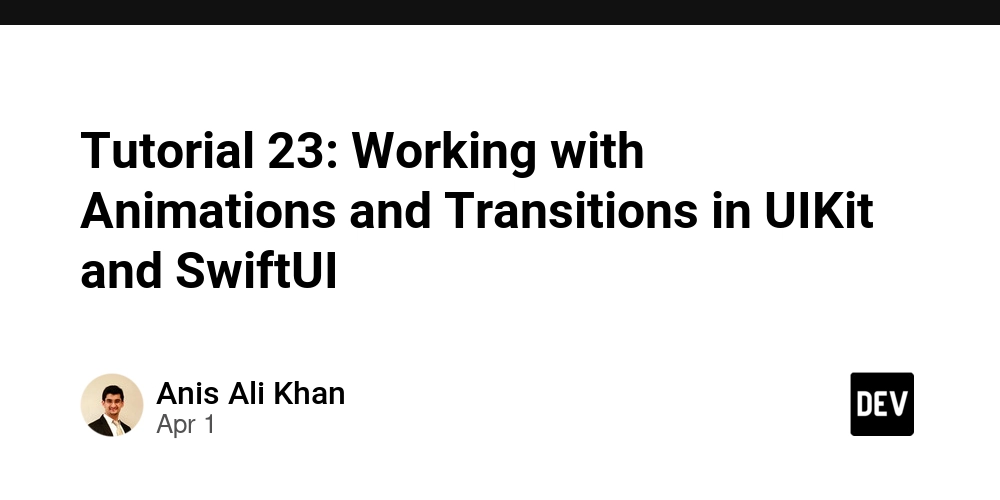Top-10 Tips for Conscious Vibe Coding
Welcome to the world of “Vibe Coding” - a way that’s transforming how we build software. This approach shifts the traditional focus from algorithmic precision to intent-driven development, where developers and non-technical professionals describe what they want rather than how to achieve it. You can read this text on our blog: Top-10 Tips for Conscious Vibe Coding What is Vibe Coding? The term “Vibe Coding” entered the tech lexicon just months ago, courtesy of Andrej Karpathy, former Director of AI at Tesla and ex-OpenAI researcher. On February 3, 2025, Karpathy tweeted: “There’s a new kind of coding I call “vibe coding”, where you fully give in to the vibes, embrace exponentials, and forget that the code even exists.” This simple yet profound statement captured the essence of a developing trend: allowing AI to handle the technical complexities while humans focus on ideation and direction. Since then, this term has exploded in popularity, with thousands of developers and entrepreneurs embracing this new paradigm. Top-10 Essential Tips for Successful Vibe Coding If you’re intrigued by the concept and eager to dive in, here are some practical 10 tips to enhance your Vibe Coding experience: 1. Give clear and concise instructions Your AI isn’t a mind reader. While it’s tempting to provide vague directions and expect magic, specificity is your friend. Instead of saying “build me a habit tracker,” try “create a NextJS-based habit tracker with daily streak tracking and a clean, colorful UI.” The more precise your instructions, the better the output. 2. Leverage different AI models Use advanced reasoning models like GPT-o3-mini specifically for planning (in Refact.ai, just click ‘Think’ button’) and creating detailed Product Requirements Documents (PRDs), then pass these comprehensive plans to execution-focused models like Claude 3.7 to handle the actual coding implementation. The planning models excel at high-level thinking while execution models efficiently translate those plans into functional code. 3. Accept and iterate, don’t perfect The beauty of Vibe Coding lies in rapid iteration. Don’t get stuck trying to make everything perfect in one go. Accept what the AI generates, test it, and then refine your instructions based on what you see. This cycle of acceptance and iteration leads to faster development and better results. Refact.ai enhances this workflow with powerful tools that allow the Agent to close the feedback loop autonomously. The Chrome tool enables the Agent to open websites or localhost servers, click through interfaces, and capture screenshots to use as additional context. Similarly, the pdb tool allows the Agent to debug code execution in real-time, identifying and resolving issues without constant human intervention. These capabilities mean the Agent can not only generate code but also test it, observe its behavior in action, and incorporate visual feedback into subsequent iterations - dramatically accelerating the development cycle while maintaining quality. 4. Structure your code in separate files Instruct a model (we recommend Claude 3.7) to generate code in a modular way, using separate files instead of one large script. Keeping everything in a single file can clutter the context window and slow down responses. Instead, request well-organized, smaller files for better clarity. Always remind the Agent to clean the generated code and unnecessary files at the end of every iteration. Also asking to update the README file after every change can be beneficial. 5. Context is key Mastering context management is the secret weapon of vibe coders. As Simon Willison, Django’s co-creator, points out: “Most of the craft of getting good results out of an LLM comes down to managing its context - the text that is part of your current conversation.” Your AI assistant only knows what you’ve shared with it, so deliberately controlling what information is in context for each request improves results. Refact.ai takes this to the next level with its RAG-based system which allows the Agent to select the most necessary files and also open them using commands like “tree” to view the directory structure and “cat” to read file contents. This autonomous context management gives the AI a comprehensive understanding of your codebase without requiring you to manually guide it through every file. The Agent intelligently determines which code components are relevant to your current task and brings them into context, ensuring generated code that’s tailored to your specific project architecture and conventions. The best way to work with Refact is to simply indicate 1-2 initial files using the @file command, and then let the system get the context from other files by itself. This efficient workflow combines the precision of targeted context with the power of autonomous exploration, creating the ideal balance for productive vibe coding. 6. Learn from the Community Community is an i
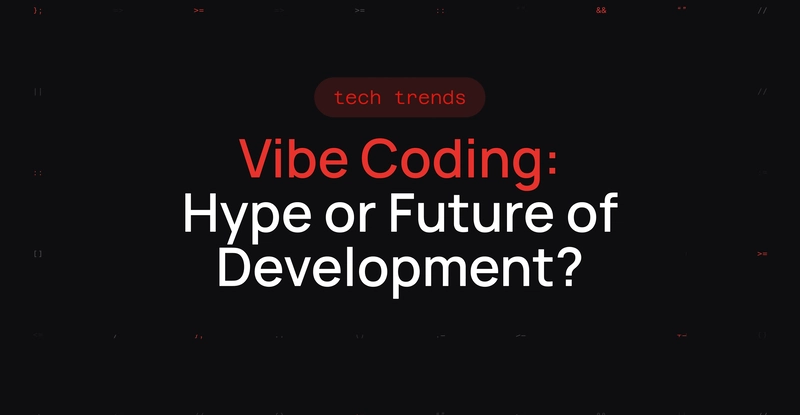
Welcome to the world of “Vibe Coding” - a way that’s transforming how we build software. This approach shifts the traditional focus from algorithmic precision to intent-driven development, where developers and non-technical professionals describe what they want rather than how to achieve it.
You can read this text on our blog: Top-10 Tips for Conscious Vibe Coding
What is Vibe Coding?
The term “Vibe Coding” entered the tech lexicon just months ago, courtesy of Andrej Karpathy, former Director of AI at Tesla and ex-OpenAI researcher. On February 3, 2025, Karpathy tweeted:
“There’s a new kind of coding I call “vibe coding”, where you fully give in to the vibes, embrace exponentials, and forget that the code even exists.”
This simple yet profound statement captured the essence of a developing trend: allowing AI to handle the technical complexities while humans focus on ideation and direction. Since then, this term has exploded in popularity, with thousands of developers and entrepreneurs embracing this new paradigm.
Top-10 Essential Tips for Successful Vibe Coding
If you’re intrigued by the concept and eager to dive in, here are some practical 10 tips to enhance your Vibe Coding experience:
1. Give clear and concise instructions
Your AI isn’t a mind reader. While it’s tempting to provide vague directions and expect magic, specificity is your friend. Instead of saying “build me a habit tracker,” try “create a NextJS-based habit tracker with daily streak tracking and a clean, colorful UI.” The more precise your instructions, the better the output.
2. Leverage different AI models
Use advanced reasoning models like GPT-o3-mini specifically for planning (in Refact.ai, just click ‘Think’ button’) and creating detailed Product Requirements Documents (PRDs), then pass these comprehensive plans to execution-focused models like Claude 3.7 to handle the actual coding implementation. The planning models excel at high-level thinking while execution models efficiently translate those plans into functional code.
3. Accept and iterate, don’t perfect
The beauty of Vibe Coding lies in rapid iteration. Don’t get stuck trying to make everything perfect in one go. Accept what the AI generates, test it, and then refine your instructions based on what you see. This cycle of acceptance and iteration leads to faster development and better results. Refact.ai enhances this workflow with powerful tools that allow the Agent to close the feedback loop autonomously. The Chrome tool enables the Agent to open websites or localhost servers, click through interfaces, and capture screenshots to use as additional context. Similarly, the pdb tool allows the Agent to debug code execution in real-time, identifying and resolving issues without constant human intervention. These capabilities mean the Agent can not only generate code but also test it, observe its behavior in action, and incorporate visual feedback into subsequent iterations - dramatically accelerating the development cycle while maintaining quality.
4. Structure your code in separate files
Instruct a model (we recommend Claude 3.7) to generate code in a modular way, using separate files instead of one large script. Keeping everything in a single file can clutter the context window and slow down responses. Instead, request well-organized, smaller files for better clarity. Always remind the Agent to clean the generated code and unnecessary files at the end of every iteration. Also asking to update the README file after every change can be beneficial.
5. Context is key
Mastering context management is the secret weapon of vibe coders. As Simon Willison, Django’s co-creator, points out:
“Most of the craft of getting good results out of an LLM comes down to managing its context - the text that is part of your current conversation.”
Your AI assistant only knows what you’ve shared with it, so deliberately controlling what information is in context for each request improves results. Refact.ai takes this to the next level with its RAG-based system which allows the Agent to select the most necessary files and also open them using commands like “tree” to view the directory structure and “cat” to read file contents. This autonomous context management gives the AI a comprehensive understanding of your codebase without requiring you to manually guide it through every file. The Agent intelligently determines which code components are relevant to your current task and brings them into context, ensuring generated code that’s tailored to your specific project architecture and conventions.
The best way to work with Refact is to simply indicate 1-2 initial files using the @file command, and then let the system get the context from other files by itself. This efficient workflow combines the precision of targeted context with the power of autonomous exploration, creating the ideal balance for productive vibe coding.
6. Learn from the Community
Community is an incredible way to learn and exchange insights. Follow key figures, join forums, and participate in discussions to pick up new techniques. For example, join the Refact.ai Discord community where we gathered developers who are excited about AI-driven programming.
7. Create a comprehensive prompt library
Develop a collection of proven prompts that work well for specific tasks. Having templates for common operations like “implement authentication,” “create a responsive navbar,” or “set up database models” can significantly speed up your workflow.
8. Understand the basics
While Vibe Coding reduces the need for deep technical knowledge, understanding fundamental concepts is still valuable. Knowing the difference between frontend and backend, basic data structures, and simple programming patterns will help you communicate effectively with your AI tools.
9. Document the process
Create a personal library of effective prompts, patterns, and terminology that consistently yield quality results with your AI assistant. Document successful approaches and your reasoning behind key decisions—this documentation becomes invaluable as projects grow in complexity. Maintain a glossary of project-specific terms that your AI responds well to, noting how slight variations in wording can dramatically affect output quality. This systematic approach transforms vibe coding from a haphazard process into a reproducible methodology that improves with each iteration.
10. Engineering discipline still matters
Even with powerful AI, engineering fundamentals remain essential. Here are several key pieces of advice from Refact.ai Co-founder Oleg Klimov, who emphasizes the importance of maintaining solid software development practices:
- Know your stuff as an engineer. AI can accelerate development, but understanding core software engineering principles ensures you produce high-quality code.
- Pay attention to generated code. AI-generated code will form the core of your project, so review, refine, and optimize it regularly.
- Be aware of AI limitations, so learn models’ weaknesses and adjust accordingly.
- Reduce code size. Simplify your codebase by eliminating redundant parts at every opportunity
- Write tests and commit frequently. Establish working checkpoints so you can revert to stable versions if needed.
AI Agent Useful Case Study
User of Refact.ai, @Ukro built a complete IoT cloud monitoring Django application with the Refact.ai Agent doing 99.9% of the work. This real-world project included sophisticated features like:
- Permission management for various modules
- Automatic real-time updates via Ajax
- UI translation editing
- Dark/Light mode
- Custom OAuth2 SSO implementation
Amazingly, @Ukro only needed to write the models.py file himself - everything else was handled by the AI agent. While Agent worked, @Ukro was busy with his main job and family, as he shared. Here are some screenshots of what the AI Agent built for him:
Potential risks of vibe coding
Vibe coding comes with significant security concerns. Developers are integrating code they don’t fully understand, leading to potential vulnerabilities. Two primary security issues:
- Blind trust: Developers implementing AI-generated code without understanding its security implications
- Dependency bloat: AI tools often add unnecessary dependencies that expand the attack surface.
In its recent article, Indie Hackers gave the example of the non-technical guy @leojr94_ who capitalized on the vibe coding trend by building an app in public and earning quick revenue, then hackers began exploiting numerous security vulnerabilities in his app.
To mitigate these risks:
- Always review generated code for security best practices.
- Understand core algorithms even if you didn’t write every line.
- Scan for potential vulnerabilities before deploying.
- Minimize dependencies when possible.
And here are some more additional recommendations from Indie Hackers:
- Don’t make your API keys public, store hardcoding keys in a secure environment that only the application can access.
- Don’t make an easily bypassable paywall
Additionally, non-technical founders should balance their “ship fast” mentality with basic security measures or partnerships with security-focused developers.
What users think about Vibe Coding
“Vibe coding” has exploded as a search term, evolving from niche concept to mainstream tech conversation.
Yet important distinctions are emerging in the discourse — some developers pointedly differentiates between intention-based “vibe coding” and potentially problematic “blind coding” where developers implement AI solutions without understanding them. The community response remains decidedly mixed: skeptics outnumber enthusiasts in recent discussions, with many experienced developers expressing reservations about reliability and maintenance implications. Join the discussion in our Discord community and share your thoughts!
Interestingly, the market is responding in polarized ways: some organizations are actively recruiting for “Vibe Coder” positions.
While entrepreneurial developers have launched services specifically targeting the cleanup of problematic code generated through vibe coding approaches.
Difference between AI Tools for Vibe Coding
This quadrant provides an overview of various AI coding tools, highlighting the key differences between those associated with “vibe coding” (such as Lovable, Bolt, and v0) and more developer-centric solutions like Refact.ai.
It is a combination of two quadrants originally shared by Henry Shi (co-founder of Super.com) and Luca Mezzalira (Principal Serverless Specialist Solutions Architect at Amazon Web Services) who is also leading ‘Dear Architects’ newsletter.
Non-technical people focused tools:
- Primarily designed for non-technical users (product managers, designers)
- Focus on natural language understanding
- Prioritize ease of use over technical precision
- Best for simple applications and prototypes (MVPs)
Developer-centric solutions (Refact.ai)
- Built for professional developers
- Balance between natural language and technical precision
- Integrate with existing development workflows
- Support complex codebases and enterprise requirements
Conscious vibe coding approach
Vibe coding represents a paradigm shift in software development — one that promises greater accessibility, faster development cycles, and more focus on creative problem-solving. However, it also demands a new set of skills focused on effective communication, critical evaluation, and security awareness.
Tools like Refact.ai are leading the way in conscious vibe coding, helping developers maintain quality and security while embracing the productivity benefits of AI collaboration. By developing a balanced approach that combines the intuitive nature of vibe coding with the rigor of traditional development practices, we can unleash the full potential of this new frontier.
As we continue to explore the possibilities of AI-powered development, the most successful developers will be those who view AI not as a replacement for technical understanding, but as a powerful collaborator that amplifies their existing skills and expands their creative possibilities.
Thanks for reading!
Get Refact.ai Agent for IDE | More links: GitHub, LinkedIn, X, Discord.









































































































































































![[The AI Show Episode 142]: ChatGPT’s New Image Generator, Studio Ghibli Craze and Backlash, Gemini 2.5, OpenAI Academy, 4o Updates, Vibe Marketing & xAI Acquires X](https://www.marketingaiinstitute.com/hubfs/ep%20142%20cover.png)

















































































































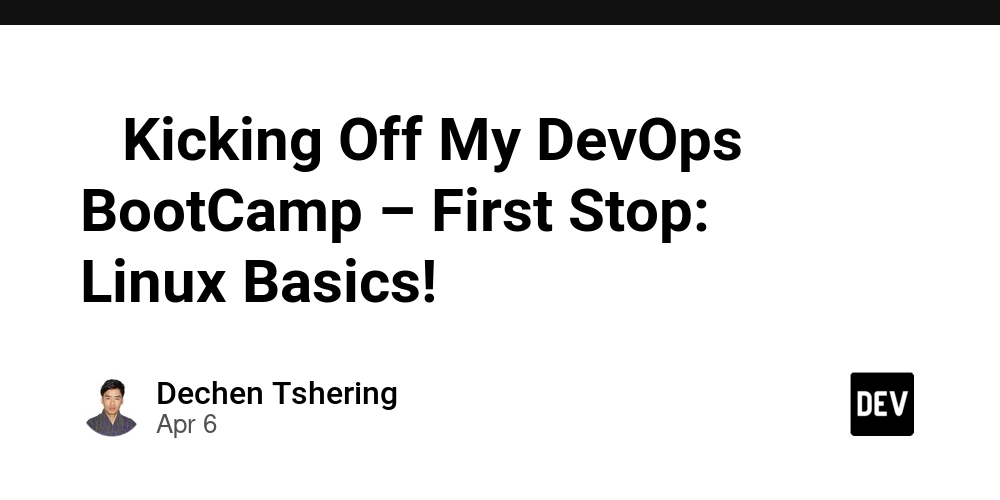









![[DEALS] The Premium Learn to Code Certification Bundle (97% off) & Other Deals Up To 98% Off – Offers End Soon!](https://www.javacodegeeks.com/wp-content/uploads/2012/12/jcg-logo.jpg)


![From drop-out to software architect with Jason Lengstorf [Podcast #167]](https://cdn.hashnode.com/res/hashnode/image/upload/v1743796461357/f3d19cd7-e6f5-4d7c-8bfc-eb974bc8da68.png?#)









































































































.png?#)
































_Christophe_Coat_Alamy.jpg?#)
 (1).webp?#)


































































































![iPhone 17 Pro Won't Feature Two-Toned Back [Gurman]](https://www.iclarified.com/images/news/96944/96944/96944-640.jpg)
![Tariffs Threaten Apple's $999 iPhone Price Point in the U.S. [Gurman]](https://www.iclarified.com/images/news/96943/96943/96943-640.jpg)





































































































































